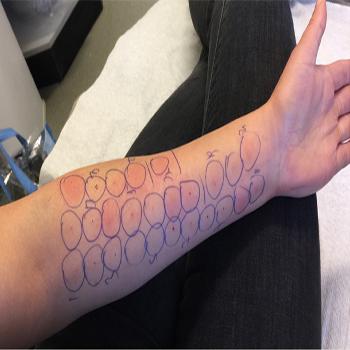What is the Allergen Profile?
An allergen profile measures the immune response to specific food allergens through an allergen-specific IgE panel. It helps identify food allergies, intolerances, and sensitivities.
Test Components:
This IgE panel quantitatively measures responses to the following 15 common food allergens:
- Almond
- Cashew nut
- Codfish
- Cow's milk
- Egg white
- Hazelnut
- Peanut
- Salmon
- Scallop
- Sesame seed
- Shrimp
- Soybean
- Tuna
- Walnut
- Wheat
Clinical Relevance:
- The test results should be interpreted alongside clinical history and physical examination findings.
- A positive IgE test indicates sensitization to a food but does not confirm a food allergy; many sensitized individuals may not exhibit symptoms upon ingestion.
Comparison with Skin Testing:
- While allergen-specific serum IgE testing is often comparable to skin testing, it may be preferred in situations such as:
- Presence of widespread skin disease
- Recent use of antihistamines affecting skin test results
- Uncooperative patients
- Medical histories suggesting a risk of severe allergic reactions with skin tests
Sensitivity and Specificity:
- Food-specific IgE tests are highly sensitive. However, they should not replace a comprehensive clinical evaluation conducted by a trained medical provider for diagnosing food allergies.
Monitoring and Follow-Up:
- The test is also useful for monitoring the progression or improvement of food allergies over time, providing valuable information for dietary management and treatment options.
Why would I need an Allergy Profile / Food Allergy Test?
An Allergen Profile, Food Test may be recommended for several reasons, including:
Identifying food allergies: Diagnose suspected food allergies if you have experienced hives, swelling, abdominal pain, nausea, vomiting, diarrhea, wheezing, or anaphylaxis after eating certain foods.
Evaluating food sensitivity: To determine if foods are causing chronic symptoms such as eczema, asthma, or gastrointestinal issues.
Monitoring known food allergies: To assess the severity of an existing food allergy and monitor how it may change over time.
Guiding elimination diets: The test helps identify which foods to avoid during an elimination diet or when reintroducing foods back into the diet to see if symptoms return.
Family history of allergies: If there is a family history of food allergies, the test can be used as a preventive measure to check for potential food allergies in children or other family members.
What do the results of the Allergy Profile / Food Allergy Test Indicate?
Negative result: Indicates no detectable IgE antibodies for the foods tested, suggesting that these foods are unlikely to cause an allergic reaction.
Positive result: Indicates the presence of IgE antibodies specific to certain foods. The level of antibodies can provide insight into the severity of the allergy:
Low levels: This may indicate a mild or less severe sensitivity.
Moderate to high levels Suggest a higher likelihood of a significant allergic reaction when exposed to the food.
